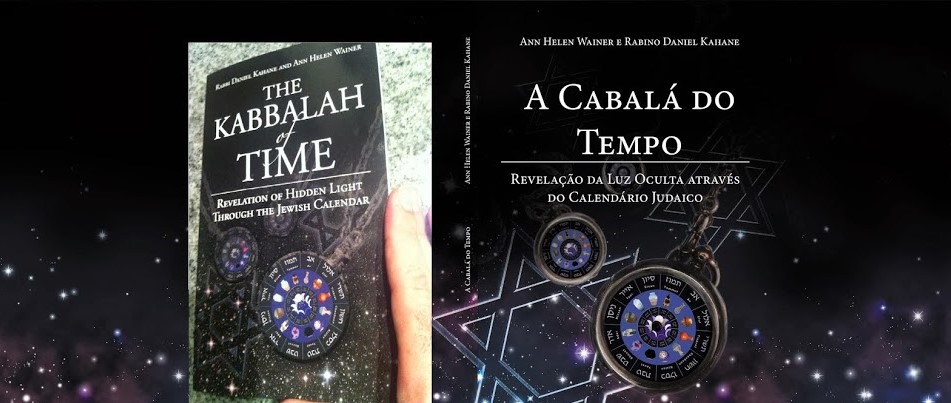The
Torah portion of Noah begins with a description of Noah's offspring,
interjecting in mid-sentence, that Noah was righteous and wholesome in his
generation and that he walked with G-d. It then states that Noah had three
children: Shem, Cham, and Yaffeth.
Similarly,
later in the portion (the beginning of the second aliyah), reads as follows:
1. And the Lord
said to Noah, "Come into the ark, you and all your household, for it is
you that I have seen as a righteous man before Me in this generation.
There
appears to be an inherent contradiction in the second verse, which is also
included in the first. If Noah was the only righteous man in the generation,
why is his entire household saved? Wasn't the whole purpose of bringing about
the Flood to cleanse mankind from all its corruption and start again out of the
sole person that showed promise?
Was
Noah's entire household righteous? Not only is that not implied in the above
verses, but we also know that Cham acted extremely inappropriately once out of
the ark (there's a debate as to what it was), which caused Noah not to have
children. The Midrash states that Cham behaved inappropriately even while
inside the ark as well.
We
therefore see that the point of the Flood was not to rid the world of evil. We
see that as well in Hashem's words to Noah after the Flood:
21. And the Lord
smelled the pleasant aroma, and the Lord said to Himself, "I will no
longer curse the earth because of man, for the imagination of man's heart is
evil from his youth, and I will no longer smite all living things as I have
done.
Rashi
comments as follows:
from his youth: This
is written מִנְּעֻרָיו [i.e., without a “vav,” implying that] from the time
that he [the embryo] shakes himself [נִנְעָר] to emerge from his mother’s womb,
the evil inclination is placed in him. — [from Gen. Rabbah 34:10]
The
Zohar comments that the verse, "Noah begot three sons," refers to
three aspects of the soul, Nefesh, Ruach, and Neshamah.
Just
as from the time a baby is born, he must struggle to fight his evil
inclination, so too, humankind as a whole. Just as the qualities of a person
are refined over time, so too the qualities of humankind itself.
Shem,
Yaffet and Cham are three essential traits, which also parallel the three
pillars that sustain the world stated in Pirkei Avot: Torah, Avodah (prayer),
and Gemillut Chassadim (acts of kindness). They also parallel
Avraham, Yitzchak, and Yaakov,[1] as well
as Moshe, Aharon and Miriam.[2]
Shem means
"name" in Hebrew. It therefore points to the aspect of truth in
a person and parallels the Torah, as well as Yaakov, as in the phrase of our
prayers, "Titen Emet L'Yaakov," "give truth to Yaakov." He
also parallels Moshe, as in the statement of our sages, "Moshe Emet
veToratoh Emet," "Moshe is truth and his Torah is truth."
Yaffet
comes from the word "Yaffeh," beautiful, representing Avodah (prayer,
Divine service) as well as Yitzchak (who represents self-sacrifice, prayer). He
is also connected to Aharon, the High Priest;
Ham
means "warm," representing Gemmilut Chassadim (acts of kindness), and
parallels Avraham, known for his kindness and hospitality. He is also connected
to Miriam, who was involved in delivering babies and saving them from Pharaoh's
evil intentions.
Miriam
appears to have been a Tikkun (spiritual "fixing") for Cham. While
Cham made it impossible for his father to have more children, Miriam saved
children and helped deliver them. It was also Miriam's conversation with her
father that led him to remarry her mother, which ultimately led Moshe's birth.
Yet,
Miriam's Tikkun of Cham was not complete. Cham had also been guilty of
slandering his father to his brothers. Miriam failed here, unfortunately
speaking Lashon Harah (slander) about Moshe, even if with the best of
intentions. Interestingly, the Torah relates that Miriam spoke about an
"Isha Kushit," "a woman from Kush," who was a descendant of
Ham. Perhaps the word Isha Kushit (repeated twice in the verse) is not only a
reference to Tziporah, Moshe's wife, but also to Miriam herself.
[1] The
descendants of Yaakov numbered 70, paralleling the descendants of Noah, also
70, as stated in the Torah portion of Vayelech.
[2] Other
"threes" in the Torah are the three mother letters in Kabbalah: Shin
(Shem), Alef (Yaffet), Mem (Cham). There also seems to be parallels with the
elements in nature that Moshe, Aharon, and Miriam represent water (Miriam's
well), air/fire (clouds of glory/pillars of fire, in the merit of Aharon), and
earth (the manna, in the merit of Moshe). After Miriam and Aharon's passing,
all elements resumed in Moshe's merit alone (the well as well as the clouds of
glory and the pillars of fire, as well as the mannah).
Sha'ar
HaGilgulim states that Moshe was a reincarnation of Shem, but also of Noah, who
represents a combination of Shem, Yaffet, and Cham. The Shem M'Shmuel states
that at the time of the sin of the golden calf, when G-d tells Moshe He will
destroy the entire Jewish people and build a nation out of him, Moshe's
response was a Tikkun for Noah, who failed to stand up for the rest of the
people. Moshe responds, "Mcheni" (erase me [from your book]. which
has the same letters as "Mei Noach," "waters of Noah," which
is how the prophet calls the Flood (implying Noah's fault in the matter).
